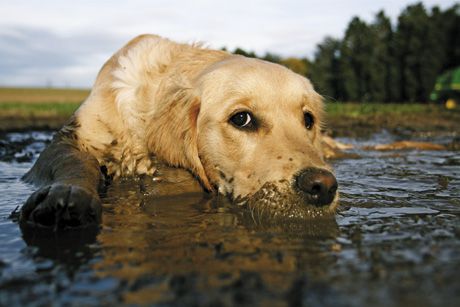Could leptospirosis be headlining in a town near you?
Study indicates the risk for this zoonotic disease in veterinary patients can have seasonal and spatial distribution, especially in areas of rainfall.

Getty ImagesLeptospirosis is a zoonotic disease that's widespread throughout the world.1 It can affect all mammals and is maintained in the wild through host urine. Hosts can transmit disease without presenting with clinical illness themselves. Dogs and people are usually infected through contact with contaminated water or contact with infected animals. Multiple serovars have been identified, and dogs can serve as important sentinel species for human infection.2,3
Zeroing in on a deluge of factors
A geographic focal area for leptospirosis was identified in the Pacific Northwest, so a retrospective study was undertaken in Oregon. Seventy-two confirmed cases of leptospirosis were identified, with 65 completed case studies. No consistent agreement on age grouping was found among studies on leptospirosis, but this study indicated that puppies and dogs less than 2 years of age represented the smallest percentage of affected cases (less than 4%). Sex did not seem to statistically affect diagnosis, as 53% of the cases were male and 47% were female. The most commonly reported clinical signs included lethargy, anorexia and vomiting, followed by diarrhea, fever and abdominal pain.
Seasonal and spatial distribution coincided with rainfall patterns for the area, with most cases diagnosed in the spring and in the western part of the state. Almost 25% of the cases included contact with environmental water, and another 14 cases related to contact with wildlife. Almost half of the cases had no history of known exposure risk. Of the 65 dogs, 44 recovered, 12 died and nine were lost to follow-up. Dermatologic conditions were also present in 14% of the dogs with leptospirosis, but the relationship between the two needs more investigation. Of the dogs in which vaccination status was known, 95% had not been vaccinated against leptospirosis in the previous year.
Exam-room application
This study indicates spatial clustering, so if you identify a case of leptospirosis you may need to be on the alert for others. Most of the dogs with leptospirosis had not been vaccinated and seemed to be located in certain geographic areas, which seasonally coincided with rainfall. Risk factors were not easily identified in every case, and affected dogs suffered from a variety of clinical signs including anorexia, lethargy and gastrointestinal signs.
Although this study only examined records of dogs in Oregon, the findings may indicate that if you see an adult, unvaccinated dog with these signs, especially in the spring (or times of increased rainfall), your index of suspicion should be higher. The presence of other cases in your hospital also increases the likelihood of infection, and you should be aware of any increased risk in your geographic region. But on the sunny side: Most of the dogs were able to recover with appropriate medical care.
Grayzel SE, DeBess EE. Characterization of leptospirosis among dogs in Oregon, 2007-2011. J Am Vet Assoc 2016;248:908-915.
Link to abstract: avmajournals.avma.org/doi/full/10.2460/javma.248.8.908
References
1. Hartskeerl RA, Collares-Pereira M, Ellis WA. Emergence, control and re-emerging leptospirosis: dynamics of infection in the changing world. Clin Microbiol Infect 2011;17:494-501.
2. Ghneim GS, Viers JH, Chomel BB, et al. Use of a case-control study and geographic information systems to determine environmental and demographic risk factors for canine leptospirosis. Vet Res 2007;38:37-50.
3. Major A, Schweighauser A, Francey T. Increasing incidence of canine leptospirosis in Switzerland. Int J Environ Res Public Health 2014;11:7242-7260.